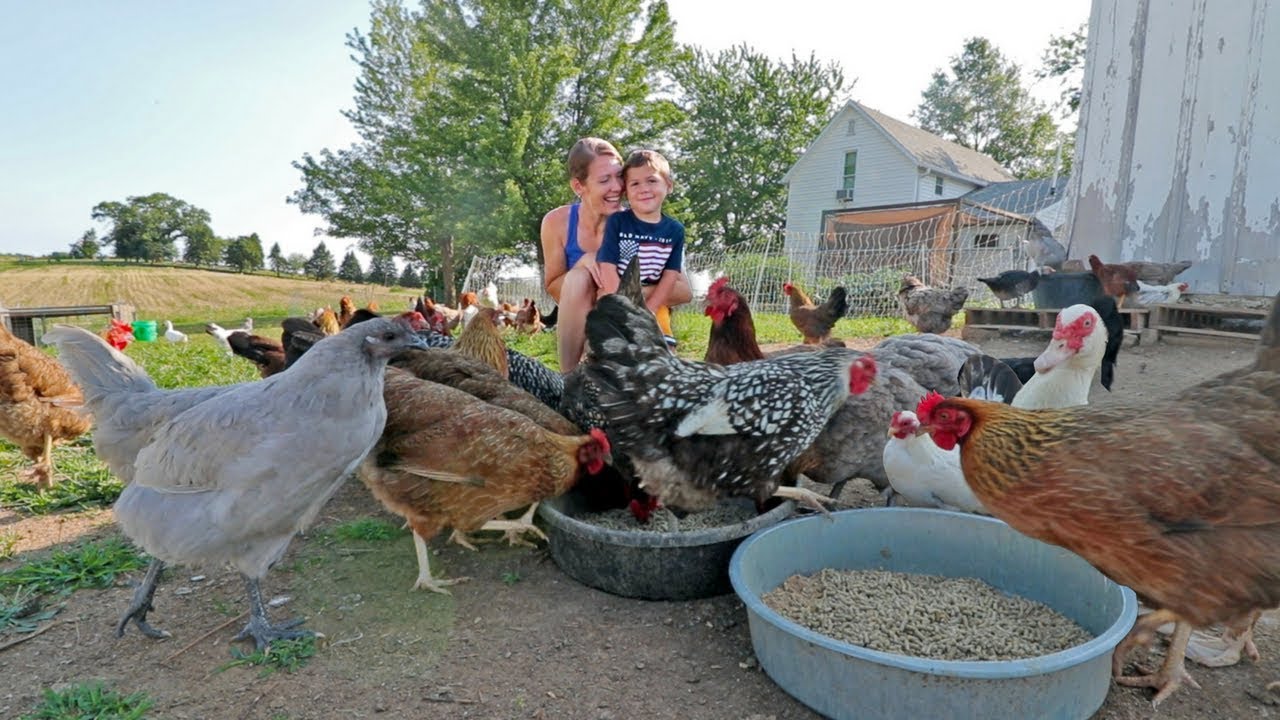Molting in chickens is a fascinating and complex biological process that can significantly impact their well-being and productivity. Understanding why some chickens molt faster than others offers insight into their health and the intricate balance of their environment.
In this article, we will explore various aspects of chicken molting, from the basics of the process to the factors influencing its pace. Whether you are a backyard poultry enthusiast or an aspiring farmer, this knowledge will equip you to better support your feathered friends.
Understanding Chicken Molting: A Natural Process
Chicken molting is the periodic shedding and regrowth of feathers. Feathers are crucial for insulation, protection, and flight, and over time they become worn out and need replacement. Molting allows chickens to maintain prime condition and health.
The frequency and pattern of molting can vary widely among chickens. Some birds undergo a fast, hard molt, while others experience a slower, more gradual process. Many factors contribute to the speed of molting, including genetics, diet, and environmental stress.
During the molt, chickens often appear scruffy and may act more subdued than usual. They redirect their energy towards growing new feathers, which can temporarily disrupt egg production. Understanding these changes is key to providing appropriate care.
What Is Molting and How Do Chickens Experience It?
Chickens experience molting as a series of physiological changes that lead to the loss of old feathers and the growth of new ones. The process can affect their entire body, or it may occur in specific areas, like the head, neck, and back, before progressing to other parts.
Molting typically begins at the head and neck, proceeds down the back, and finishes with the tail. The severity and pattern of feather loss can be different for each chicken, with some showing large bare patches and others shedding more evenly.
The stress of molting can also influence a chicken’s behavior. They might seek more secluded spots to rest and show less interest in socializing. This is a natural response as they conserve energy for the demanding process of feather regrowth.
When Do Chickens Molt and What Factors Influence This Process?
Chickens usually molt annually, with many starting the process in the fall as daylight hours decrease. However, factors such as breed, age, and environmental conditions can alter this timing.
Breed is a significant factor, as some breeds, known for their rapid molting, can shed their feathers and grow new ones in just a few weeks, while others take much longer. Age also plays a role; younger birds often molt more quickly than older ones.
Environmental stressors such as extreme temperatures, inadequate nutrition, or overcrowding can trigger an early or more intense molt. Understanding and managing these factors can help ensure a smoother molting process for your chickens.
How Long Does Molting Last in Chickens and Does It Affect Egg Production?
The duration of molting in chickens can range from a few weeks to several months. The average molt lasts about 8-12 weeks, but this is highly variable.
Egg production is significantly affected during molting. As chickens focus their energy on feather growth, they may stop laying eggs altogether. It is vital to provide a high-protein diet during this time to support both feather production and the eventual return to laying.
Once the molt is complete, chickens will usually resume their normal egg-laying patterns. However, the quality and frequency of egg production might improve as the birds emerge healthier with fresh plumage.
Do Roosters Molt and How Is It Different from Hens?
Roosters, like hens, undergo molting, although the process can differ between genders. Roosters may experience a less noticeable molt compared to hens, as they often retain their tail and wing feathers longer for display purposes.
The timing of molting in roosters can also be less predictable, and their behavior during the molt may become more subdued. As with hens, it’s important to provide roosters with a nutrient-rich diet to support feather regrowth.
Monitoring your rooster closely during his molt and offering extra care can help him emerge with a vibrant new set of feathers, ready to take on his role as the flock’s protector once again.
Common Symptoms of Molting in Chickens and How to Recognize Them
- Patchy feather loss or thinning
- Decreased activity and increased rest
- Reduced egg production or temporary cessation
- New pinfeathers, which appear as small, quill-like structures
- Increased pecking or preening behavior
Recognizing these symptoms early allows chicken keepers to provide targeted support during the molting period. Adjustments to the diet, environment, and routine care can all contribute to a healthier molt and quicker recovery.
What Can You Do to Support Your Chickens During Molting Season?
Supporting chickens during molting season involves several key strategies:
- Increase protein intake: Offer a higher protein feed or add protein-rich treats like mealworms or cooked eggs to their diet.
- Maintain calm: Reduce stressors by keeping a consistent routine and minimizing disturbances.
- Provide shelter: Ensure chickens have a comfortable place to rest away from the elements and potential predators.
- Monitor health: Keep an eye on your chickens for any signs of illness or complications related to molting.
- Avoid handling: Minimize handling as new feathers, especially pinfeathers, can be sensitive and painful.
By understanding and accommodating your chickens’ needs during molt, you can help them rebound more quickly and return to their regular activities, including egg laying.
Frequently Asked Questions About Chicken Molting
Why Do Some Chickens Molt Worse Than Others?
Some chickens may experience a more challenging molt due to various factors such as nutritional deficiencies, genetic predisposition, or environmental stressors. Providing a balanced diet and stable environment can help mitigate severe molting.
It’s also important to consider the bird’s age and overall health, as these can influence their ability to cope with the demands of molting.
What Is the 90/10 Rule for Chickens?
The 90/10 rule suggests that 90% of a chicken’s diet should come from a balanced poultry feed, while the remaining 10% can consist of treats and other food items. This ratio helps ensure chickens receive sufficient nutrients, especially during molting.
Adhering to this rule is crucial when chickens are molting, as their bodies require additional resources for feather growth.
How to Speed Up Molting in Chickens?
To speed up molting, focus on providing excellent nutrition, particularly increasing protein intake. A stress-free environment and minimal handling can also help chickens molt more quickly and comfortably.
Remember, while you can support the process, molting is ultimately governed by the chicken’s biology, and some patience may be required.
Why Are My Chickens Molting Early?
Chickens might molt early due to stressors such as changes in their environment, diet disruptions, or health issues. Ensuring a consistent and supportive setting can prevent early molting.
Monitoring your flock’s health and conditions can help you address any potential triggers promptly.
To further understand the intricacies of chicken molting, watch this informative video which delves into the process:
In conclusion, molting is a critical part of a chicken’s life cycle. The big reason some chickens molt faster than others often comes down to breed, diet, and living conditions. By providing a supportive environment, you can help your chickens through this challenging time, ensuring they emerge healthier and ready to resume their regular activities.





